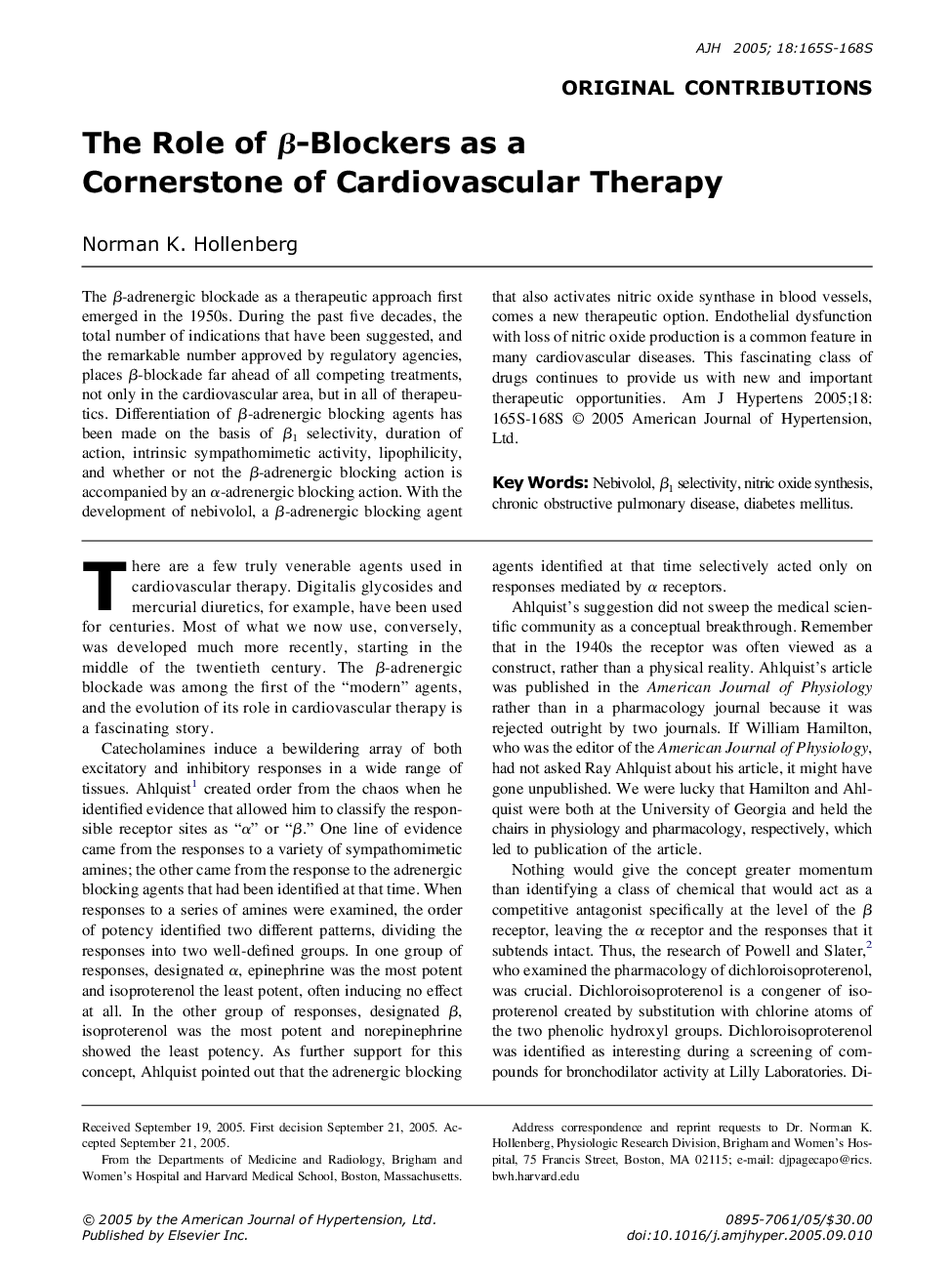| Article ID | Journal | Published Year | Pages | File Type |
|---|---|---|---|---|
| 9940666 | American Journal of Hypertension | 2005 | 4 Pages |
Abstract
The β-adrenergic blockade as a therapeutic approach first emerged in the 1950s. During the past five decades, the total number of indications that have been suggested, and the remarkable number approved by regulatory agencies, places β-blockade far ahead of all competing treatments, not only in the cardiovascular area, but in all of therapeutics. Differentiation of β-adrenergic blocking agents has been made on the basis of β1 selectivity, duration of action, intrinsic sympathomimetic activity, lipophilicity, and whether or not the β-adrenergic blocking action is accompanied by an α-adrenergic blocking action. With the development of nebivolol, a β-adrenergic blocking agent that also activates nitric oxide synthase in blood vessels, comes a new therapeutic option. Endothelial dysfunction with loss of nitric oxide production is a common feature in many cardiovascular diseases. This fascinating class of drugs continues to provide us with new and important therapeutic opportunities.
Related Topics
Health Sciences
Medicine and Dentistry
Cardiology and Cardiovascular Medicine
Authors
Norman K. Hollenberg,
